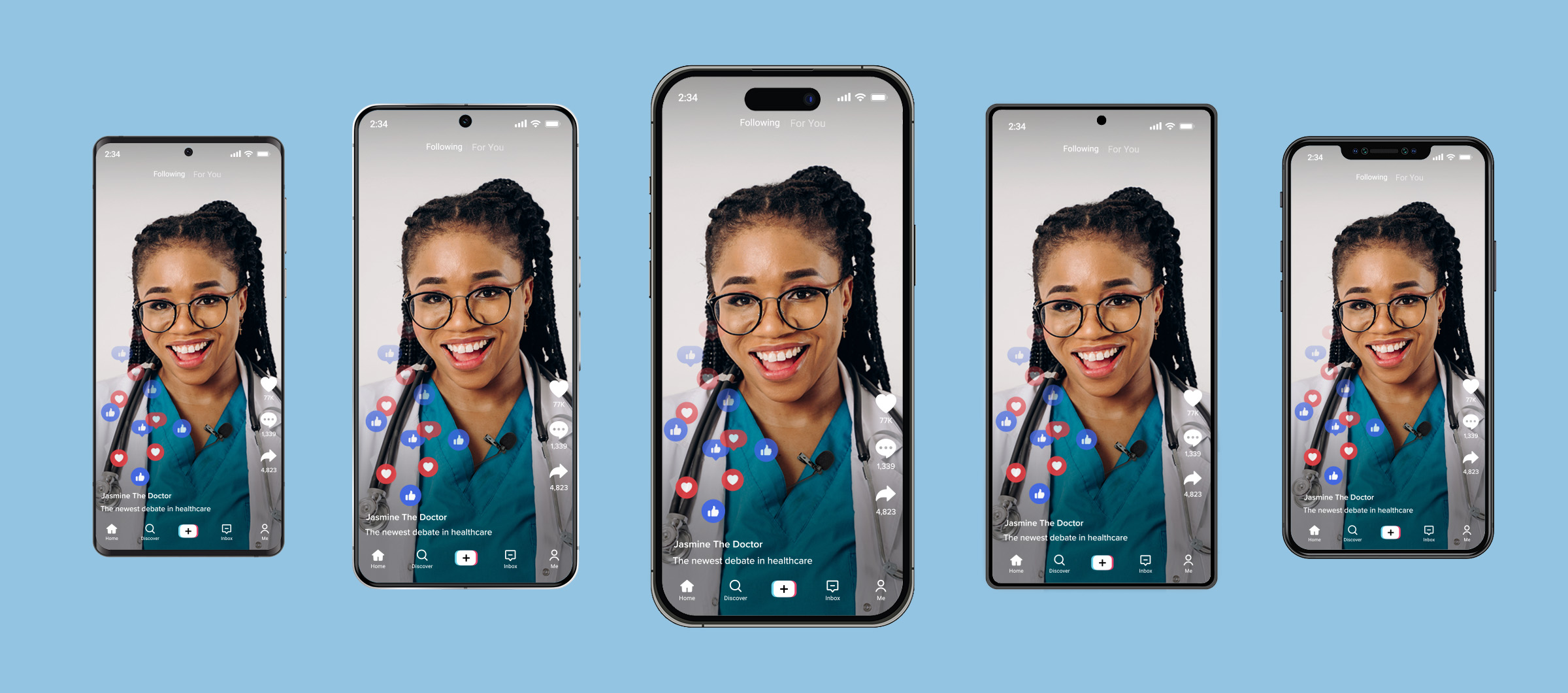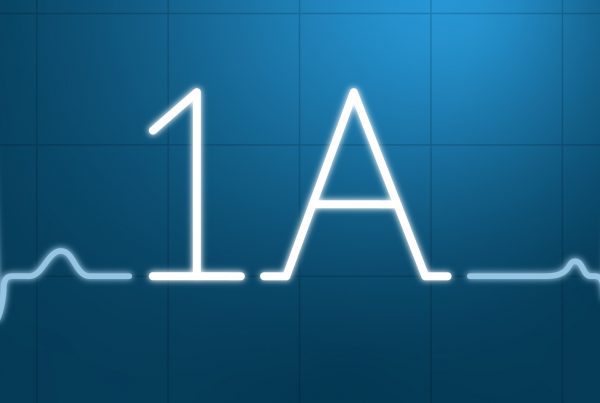The Big Story: Social Media in Healthcare Statistics 2025 By Data, Insights, Engagement
“Healthcare-related content from influencers sees a 45% higher engagement rate compared to content from healthcare organizations.”
Why Influencers Win
By Emme Nelson Baxter and Tommy Barbee
3-minute read
In healthcare, that stat hits especially hard.
After all, your hard-working MarComm team’s been posting research-based, life-preserving info – and an influencer (hopefully one in scrubs) might get 1.5X the clicks. With info that might be correct. Or might not.
Frustrating? Yes. Addressable? Absolutely.
As word people, it’s tempting to think this is just a language issue with Gen Z and other digital natives. That, if we swapped out medical and corporate terms for plain – even catchy – language, everything would resonate. But it’s deeper than that. It’s a matter of trust.
By now, a couple of generations have grown up online. Brands have tried to chat with them like their best friend. They’ve also sold their data and even ghosted them when the going got tough.
Morning Consult’s 2024 Most Trusted Brands Report backs this up. It states that “95% of brands have lower trust ratings with Gen Z than the general public.” Also, it says, for the average brand tracked, Gen Z trust was 10 points lower than that of the general adult population.
Influencers win because people trust people. Especially those who look, talk and think like them. And influencers feel real. They make mistakes. They tell personal stories. They respond to comments. They speak with you, not at you. They don’t run everything through a corporate filter. Or at least, don’t appear to.
“Influencer” may have a particular meaning in today’s digital world, but those elements that create influence aren’t unique to digitally native generations.
Authenticity is gold. In the case of younger adults, as corporate brands have increasingly latched onto the stalwart social platforms (think Meta and X), younger adults are gravitating to TikTok, Discord and Bluesky – where individual creators, not brands, dominate.
This is who Gen Z is listening to for health advice, whether we like it or not. Connecting with this cohort early will help bring them along as they move through adulthood.
What Can Healthcare Orgs Do?
Yours is the voice of truth. Own it.
If you haven’t already, assess your language. We’re not saying to memorize Wikipedia’s Glossary of Gen Z Slang. Rather, listen to what you’re saying publicly and determine whether it fits the needs and expectations of your many stakeholders – in voice and in message. Gen Z is the example here, but like all good communications advice, the principals apply across the board.
We wrote last week about how healthcare organizations are talking about their community benefit. Pontificating about Medicaid shortfalls doesn’t resonate with the public. But talking about mobile clinics and cool research breakthroughs and sharing stories about the people making it happen does.
To gain trust, consider shifting how you show up online and – get this – even IRL. They may not instantly flock to your TikTok account, but you’ll gain street cred for when you need to deliver a vital message.
Start here:
- Sound Like a Human. Ditch the jargon. Talk like someone who gets it and cares. Use real voices of people who look and sound like your target audience. A young nurse, med student, resident or patient advocate? Perfect.
- Be Real. Authenticity seems to be more prized than authority. Show behind-the-scenes. Focus on patient stories instead of black-and-white numbers. At the same time, don’t pretend everything’s perfect when it’s not. People can spot a phony apology or fake optimism from a mile away. If something’s hard, say it, own it and rise to the challenge.
- Make It Easy. You’re not just competing with other health systems. You’re competing with Uber and Amazon. Leverage convenience, control and digital-first experiences. If making an appointment is clunky, the bill surprising or confusing and the waiting room decor so last century, you’ve lost them. These aren’t just patient experience upgrades. They’re trust builders.
- Build Micro-Communities, Not Megaphones. Trying to reach people en mass doesn’t work. This is particularly true for Gen Z. Use niche messaging to speak directly to college students, young parents, LGBTQ+ youth and teens in rural areas. Even better, allow them to shape your content. Embrace polls, comment sections, group chats and allow them to be part of your research. And yes, you can partner with trusted health influencers as collaborators.
Beyond Clicks
The society-wide trust gap among teens and young adults isn’t going to be solved by these four ideas. But they’ll go a long way towards ensuring that individuals have a better experience with healthcare during those rare moments when they need to use it.
View this as laying the groundwork for trust that can last a lifetime. For real.




